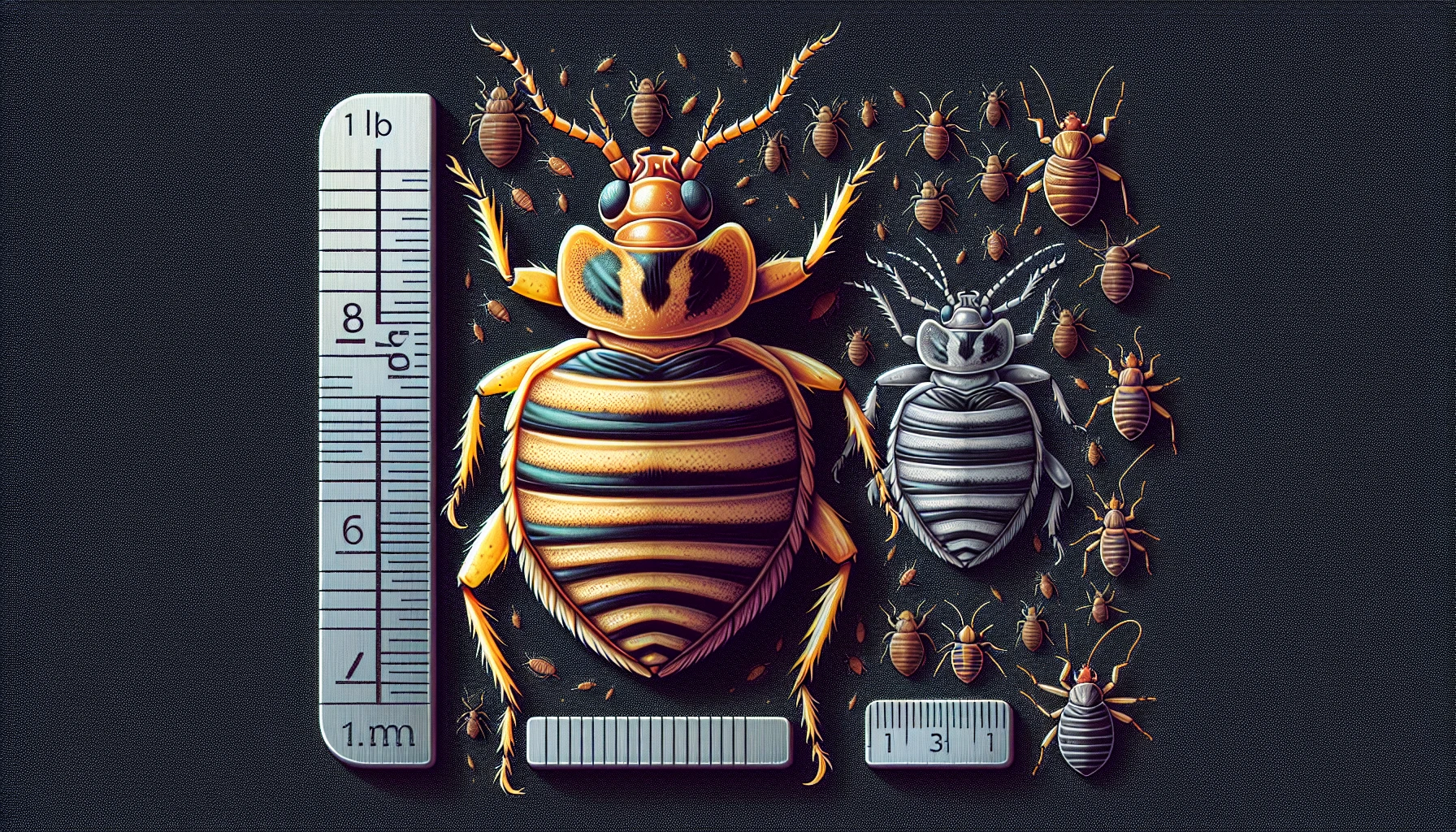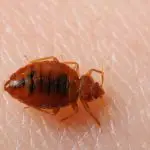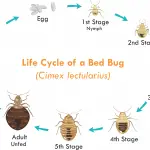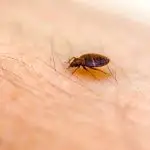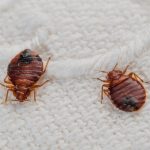How Big Are Bed Bugs? Unveiling the Size of these Tiny Pests
Introduction to Bed Bugs
When it comes to household nuisances, few critters can cause the stir that bed bugs do. These tiny pests have earned a notorious reputation, not just for their itch-inducing bites but also for their talent in remaining covert. The pea-sized critters are often shrouded in mystery, skirting the line of visibility to the human eye. Our quest to uncover how big are bed bugs is more than a mere curiosity—it’s a crucial step in both their identification and eradication from our homes.
Picturing something as small as an apple seed scurrying across your sheets is enough to make anyone’s skin crawl. However, their diminutive stature is precisely what makes them such adept invaders in our beds and bedchambers. An adult bed bug, when not engorged with a blood meal, might measure a mere 5 to 7 millimeters—comparable in size to Lincoln’s head on a penny. That’s small enough to sneak into the tiniest of crevices! Learning more about bed bug infestations can help us understand how these unwelcome guests operate.
But why does size matter when it comes to bed bugs? Knowing how big these pests are at various life stages empowers us to better spot them, whether it’s identifying a lone bug, a small cluster, or an entire community laying siege to our sanctuary of sleep. In fact, effective detection strategies hinge upon our ability to recognize them at any size, from eggs scarcely the size of a pinhead to adults that could masquerade as a stray lentil on your bedspread.
To give you a visual, imagine settling into your comfy bed, ready to drift off into dreamland, only to spot a tiny brown speck moving slyly across your pillowcase. Though small, once you’ve magnified the bed bug situation, there’s no unseeing it. It’s a stark reminder that when it comes to bed bugs, size truly does matter in spotting and putting an end to these minuscule marauders.

Embracing an analytical approach to bed bug management means we also need to consider how their size influences their behaviors and vulnerabilities. A better grasp on the scale of these insects facilitates a more targeted approach to control, enabling us to fine-tune our strategic plans to send them packing. There’s something almost paradoxical about their presence; bed bugs remind us that something so small can create a problem of such significant scale.
The Scale of Bed Bug Sizes
Entrancing in its complexity, the world of bed bugs presents a diverse expanse of sizes not immediately apparent to the unsuspecting eye. From the opaque, pinhead-sized eggs to the more visible adults, these silent bedroom invaders traverse a spectrum of dimensions. Let’s embark on a visual journey through the various life stages of bed bugs, drawing parallels from the familiar to the intricate world of these miniature marauders.
Adolescence in bed bugs, termed ‘nymphs,’ sees them undergo five meticulously distinct molts before reaching maturity. Fresh from the egg stage, a nymph could easily be mistaken for a speck of dust, measuring a mere 1.5 mm. As they feast and grow, they reach a length of up to 4.5 mm, and by the final molt, the size difference is akin to comparing a sesame seed to a plump lentil.
Adult bed bugs take the scale up a notch and lay claim to a size that’s both awe-inspiring and distressing for anyone unlucky enough to host them. These mature pests can swell to about 5.5 mm in length—comparable to the size of a small apple seed. LIke a tiny, well-versed thief, they skillfully navigate through sheets and crevices, unseen yet potentially close enough to touch.
Amidst these crawling critters, visual comparison delivers a poignant perspective. Imagine a progression from a single grain of granulated sugar (our humble bed bug egg) to the more rotund shape and size of a small apple seed (the fully-grown adult). The transformation is remarkable, an evolutionary testament observed within the confines of our very own dwellings.
Embedded within these words, you’ll find an image capturing the elusive bed bug in various stages of growth.  This visual aid is a stark reminder that what may appear insignificant could hold a larger presence in our homes. For those seeking peace of mind, it is worth reading tips on how to prevent these pests from becoming unwelcome bedfellows.
This visual aid is a stark reminder that what may appear insignificant could hold a larger presence in our homes. For those seeking peace of mind, it is worth reading tips on how to prevent these pests from becoming unwelcome bedfellows.
Entrenched within our daily lives, the intricacies of bed bug sizes reflect a hidden world of growth and development. As we pull back the sheets of this microscopic domain, it’s essential to remember the magnitude of what we cannot see could indeed have a significant impact.
Life Cycle: From Egg to Adult
Let’s hatch the truth about bed bugs’ size. These tiny critters have a remarkable journey from egg to adulthood, and understanding this transformation is key to stopping them in their sneaky tracks. Imagine stumbling upon a tiny white spot, no bigger than a pinhead; that’s a bed bug egg for you. From this inconspicuous beginning, bed bugs undergo a spectacular, although unwanted transformation.
You may not know this, but bed bugs are like undercover agents, changing sizes and colors through five immature stages known as nymphs – all of which can slip by unnoticed if you’re not on your A-game. Nymphs start off at a nearly invisible 1.5 mm and grow up to a more noticeable 4.5 mm. That’s like comparing a speck of dust to a lentil!
After each blood meal, these nymphs shed their skins, a process called molting, and flaunt a new, larger shell. It’s like a series of costume changes in a spy movie, only less glamorous. By the time they reach maturity, they’re about the size of an apple seed, a substantial growth from their egg stage, and now they’re on a mission: to feed and reproduce. This sleuthing size change is essential to note because knowing the enemy is half the battle in bed bug warfare.
As a homeowner or a hotelier, you could be hosting a silent soiree for these pests without even realizing it. They could be throwing disco parties in the seams of your mattress, or lurking behind electrical sockets. Noticing the different sizes of bed bugs during these life stages is crucial for nipping the infestation in the bud.
If you’re thinking, “Just how steadfastly can these bugs grow?” I’ve got you covered. Let’s watch a video that sheds light on the not-so-spectacular rise of these tiny pests.
To sum it up, understanding the bed bug’s growth patterns isn’t just a matter of curiosity—it’s a strategic advantage. A keen eye can discern the stages and help you target your defensive strategies. Be it through crunching them in their infancy or laying siege to the adults, knowledge of their sizes throughout their life cycle is a powerful tool in the art of bed bug elimination warfare.
Detecting Bed Bugs by Size
Imagine this: It’s a quiet night, you’re about to drift into dreamland, but then you get that creepy-crawly feeling. Could it be bed bugs? Knowing how large bed bugs are at different stages of their lifecycle can be your first line of defense. Spotting them may seem like finding a needle in a haystack, but it’s not quite the impossible task it seems to be.
Adult bed bugs are roughly the size of an apple seed, a comparison that suddenly turns the innocuous into the insidious. They’re flat, oval-shaped, and brownish in color, enabling them to squeeze into the tightest of spaces. But before they reach adulthood, bed bugs pass through various nymph stages. Initially, they’re as small as a pinhead and nearly translucent, making early detection a bit of a challenge. As they grow, they become more visible but still remain a stealthy 1/4 of an inch.
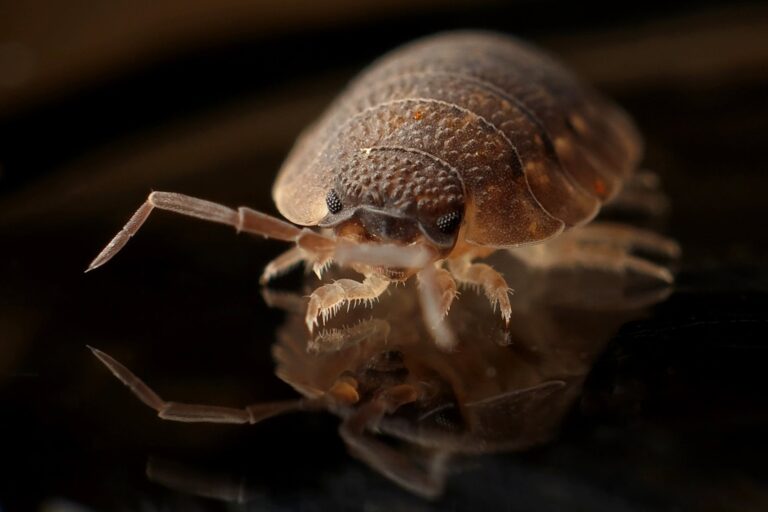
When you’re checking for these tiny pests, scrutinizing your sleeping area or furniture is key. You’re looking for minute signs of life in the folds of your mattress, between the seams of your couch, or even behind peeling wallpaper. Check for tiny black spots (bed bug excrement) or small red stains (the unfortunate aftermath of their feeding)—they’re telltale hints that bed bugs have been around.
Early detection can’t be stressed enough. Catching a glimpse of even the tiniest unwelcome guest can save you from the severe infestation that follows unchecked growth. By understanding bed bug sizes across their lifecycle, and knowing where to look, you can stop an infestation in its tiny tracks. For more helpful strategies on spotting these tiny intruders, harness the knowledge of experts and keep your living space pest-free.
Remember, awareness of bed bug sizes isn’t just intriguing trivia; it’s a critical weapon in your anti-pest arsenal. With vigilance and knowledge, you can lay your head down at night knowing that the only things tucked in bed with you are your favorite pillows and blankets, not these unwelcome houseguests.
The Impact of Size on Bed Bug Infestations
When it comes to bed bugs, size does matter—and not in a way that’s beneficial to us. These minuscule marauders are experts at playing hide and seek, with their small stature being their ultimate stealth weapon. So, how big are bed bugs? Typically, they can be as tiny as an apple seed, a size that allows them to slip into the most inconspicuous of crevices, out of sight and out of mind, until their numbers swell into a full-blown infestation.
Imagine you’re refurbishing your quaint vintage sofa, and you find an army of bed bugs snugly nested within. This is not a rare occurrence; the unsettling reality is that their diminutive frames can turn almost any household item into a potential bed bug penthouse. Beds, furniture, and even behind wallpaper—no territory is too small or too private for these pests.
So, why does their size amplify their threat? It’s simple: detection becomes challenging. Inspecting for signs of an infestation often means engaging in a microscopic manhunt. Look for subtle signs: rust-colored smears from their blood-filled fecal matter, the shed skins of growing nymphs, or the itchy aftermath of their nighttime feasting. The significance of early identification cannot be overstressed; it can mean the difference between an easy remedy and a lengthy, costly eradication process.
Fortunately, knowledge is power. Equip yourself with insights on what to watch out for and how to effectively search for evidence of these tiny invaders. And if you’re unsure about what signs to seek, this video is a great place to start:
Preventative measures can also play a critical role in avoiding infestations. Regularly inspecting bedding, furniture seams, and even luggage after travel can spare you from the unwanted hassle of an uninvited bed bug gathering. Remember, their size may be an advantage in their stealthy conquests, but with a vigilant eye and informed approach, you can thwart their plans of homely domination.
Search for Signs Like a Detective
To effectively inspect for these tiny trespassers, adopting a detective-like mindset is essential. Roll up your sleeves and investigate with a fine-tooth comb, flashlight in hand. Don’t scoff at any potential clue, no matter how minuscule. After all, it’s the tiny clues that often lead to the biggest breakthroughs in tracking and terminating bed bug infestations. With persistence, attention to detail, and a proactive mentality, you can maintain a bed bug-free household.
Size Does Matter: Treatment and Prevention Strategies
When it comes to bed bugs, size certainly does play a pivotal role in the fight against these tiny invaders. An adult bed bug can grow up to the size of an apple seed, but during its early stages, it can be as small as a speck of dust. This dramatic size variation makes detecting and treating bed bug infestations uniquely challenging. Yet, understanding their size isn’t just an academic exercise—it’s essential for deploying a successful strategy to control and prevent these pests from making a home in your bed.
Imagine this: You’re packing your suitcase after a cozy stay at a quaint B&B. Unbeknownst to you, a few adolescent bed bugs, barely visible to the naked eye, have snuck into your belongings. Upon returning home, these pests set up residence, rapidly multiply, and start their nightly feasts. With knowledge of their tiny stature and habits, you could have been more vigilant, knowing that a thorough inspection of your luggage could save you from a full-blown infestation.
Effective bed bug treatment starts with recognition. Aggressive tactics like thermal remediation or comprehensive chemical treatments hinge on identifying where these minuscule marauders hide. Their size allows them to tuck away into the smallest of crevices, behind wallpapers, inside electrical outlets, and even within the seams of your mattress. Therefore, professional pest control services often begin with a meticulous examination of suspected hotspots, employing tools specially designed to flush out these pests, no matter how well they’re hiding.
Prevention, on the other hand, involves a combination of vigilance and environmental control. Encasing your mattress and box springs in protective covers shrinks their available real estate. Regular vacuuming, particularly along baseboards and under beds, disrupts any adventurous bugs looking to set up camp. Furthermore, reducing clutter removes potential bed bug hideouts, effectively shrinking their world and making it harder for them to go unnoticed.
Yet, even with the sharpest of eyes and the cleanest of homes, bed bugs can still breach your defenses. That’s why turning to professionals can be a game-changer. With their arsenal of resources, knowledge of bed bug behavior, and access to advanced treatment methods, pest control experts are adept at not just squashing existing populations, but also safeguarding your home against future invasions.
Take, for example, the use of canine detection teams—bed bugs may be good at hide-and-seek, but they’re no match for a dog’s nose. Trained dogs can sniff out bed bugs with impressive accuracy, making them a valuable asset in both detecting and confirming the success of a treatment. It’s a real-life example of how enlisting experienced professionals can turn the tide in the battle against these stubborn pests.
In conclusion, don’t let their size fool you. Bed bugs might be tiny, but their impact can be huge. By understanding the importance of size in controlling and preventing bed bug infestations, and by following strategic recommendations—such as enlisting professional pest control services—you’re taking powerful steps toward keeping these elusive pests at bay.
Frequently Asked Questions
Do you wake up with itchy, mysterious bites? Bed bugs might be the bite-sized culprits, and they’re more common than you might think. Here’s the lowdown on these diminutive pests, helping you spot them, anticipate the risks, and take pre-emptive strikes!
What do bed bugs look like in various life stages?
If you’re suspecting a bed bug breakout, you’re probably imaging a creature you can easily spot. Here’s the twist: bed bugs are the infiltrators of the pest world, masters of hide-and-seek. As nymphs, they’re as tiny as a speck of dust, morphing into apple seed-sized adults. And if you find one, keep your eyes peeled; there are likely more playing hide-and-scout in the nooks of your bedroom.
Are the bites dangerous?
Now, bed bug bites can be a real pesky issue, but are they harmful? While not known to transmit diseases, these bites can lead to a red, itchy aftermath. Think back to a sleepover where a friend overstayed their welcome – bed bugs are like that, but they niback! And for those with sensitive skin or allergies, their bites can escalate things, causing more severe reactions. If you’re feeling like a midnight snack for these critters, it’s high time to put an end to the all-you-can-eat buffet they’re hosting at your expense.
How can I prevent bed bugs from setting up camp?
Let’s talk prevention! It’s like building a fortress – a bed bug-proof fortress. The secret? It’s all about being observant. Regularly inspecting your sleeping quarters, from the wilderness of your mattress to the valleys of your bed frame, is essential. Use protective encasements for your mattress and box spring as a shield against these unwelcome squatters. And when you travel, don’t let your luggage become a Trojan Horse for these mini invaders. Always check your hotel room for signs of bed bugs before unpacking, as they are notorious hitchhikers looking for a free ride to their next destination: your home.

Armed with your newfound knowledge on bed bug sizes and habits, you can now better safeguard your abode from their tiny, mighty clutches. Keep an eye out, check twice, and stop those bites. After all, your bedroom is a sanctuary, not a bug banquet hall!
